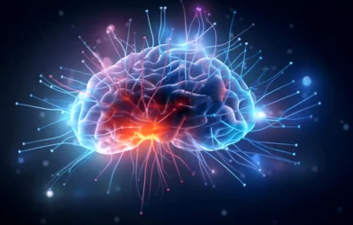Humans are the most unique creatures on Earth thanks to our powerful and mysterious brain. The brain is the body's most complex organ, controlling our thoughts, emotions, memories, and behavior. Despite centuries of research, our understanding of this remarkable organ remains far from complete.
In fact, the brain's complexity far exceeds our imagination, and current scientific and medical advances are not yet sufficient to fully uncover its secrets. Some believe that humans only understand about 10% of their own brains, or that we utilize less than 10% of them. This suggests that up to 90% of the brain's potential remains untapped. Consequently, some claim that even the most advanced machines would struggle to replace the creative power of the human brain. However, the scientific community remains undecided on whether this claim is accurate. What is certain is that our understanding of the brain still has a long way to go.
Human Brain Structure
- Structure of the Cerebellum, Cerebellum, Diencephalon, and Brainstem
In daily life, we often consider the cerebrum to represent the entire human brain, but the cerebrum is actually only one important component of the human brain. According to Baidu Encyclopedia, the human brain is composed of the cerebrum, cerebellum, diencephalon, and brainstem, each with its own distinct form and function, and serves as the foundation for human behavior and thinking. The cerebrum, as the core of the central nervous system, is not only the largest but also the primary driver of brain function. It is divided into two cerebral hemispheres, connected by the corpus callosum, a network of nerve fibers.
▲ Functions of the Brainstem
- Structure and Function of the Brainstem
The brainstem, known as the "autonomous brain," is the most basic yet crucial part of the human brain. It controls basic physiological functions such as heartbeat, respiration, circulation, digestion, and sleep, and is responsible for regulating the autonomic nervous system. Furthermore, the brainstem is responsible for motor functions such as chewing and walking, essential life activities. It sits above the cerebral hemispheres and below the spinal cord, forming an irregular columnar shape. The brainstem is responsible for heartbeat, respiration, and other basic physiological activities, and is a core component for maintaining life.
- Functions of the Cerebellum
The cerebellum is located below the cerebrum and occipital lobe, just dorsal to the brainstem, and is the second largest component of the brain. It consists of two hemispheres, with gray matter located on the outside and white matter on the inside. Functionally, the cerebellum works in tandem with the motor areas of the cerebral cortex to control muscle movement and maintain postural balance. However, when the cerebellum atrophies, symptoms such as unsteady standing and a stumbling gait can occur, severely impacting quality of life. The cerebellum works with the cerebrum to control movement, and when damage results in movement disorders, the condition of the cerebellum can severely impact quality of life.
- The Role of the Diencephalon
The diencephalon is primarily composed of the thalamus and the hypothalamus (the lower part of the thalamus). The thalamus serves as a transducer for incoming nerve impulses, receiving and converting nerve signals from receptors throughout the body. These signals are crossed before reaching the thalamus, meaning that signals from receptors on the left side of the body are transmitted to the right, and vice versa. Therefore, damage to one side of the thalamus can cause sensory impairment or spontaneous pain in the contralateral limb. The hypothalamus, located anterior and inferior to the thalamus, is a higher-order center that regulates autonomic nervous system activity and also regulates emotional responses, body temperature, and metabolism. The diencephalon coordinates sensory, emotional, and endocrine activities through the thalamus and hypothalamus, serving as a sensory and functional hub.
Intelligent Activities of the Cerebral Cortex
The brain, the highest level of the nervous system, consists of two cerebral hemispheres, connected by transverse nerve fibers. Each hemisphere is covered by a layer of gray matter, the cerebral cortex, which is home to the cell bodies of nerve cells. The cerebral cortex is unique to humans and is responsible for processing complex intellectual activities, language functions, and social interactions. The cerebral cortex is the core of higher-level cognition, language, and social functions, and its structural complexity is astonishing. The uniqueness of the cerebral cortex





